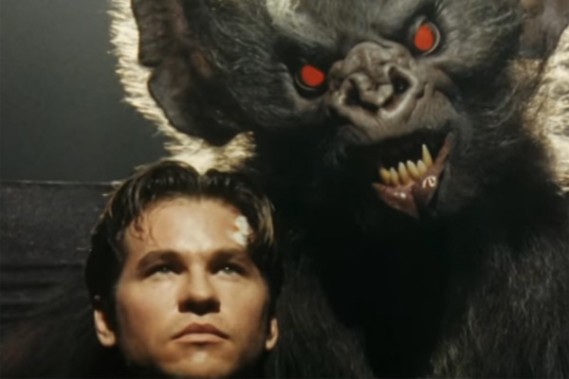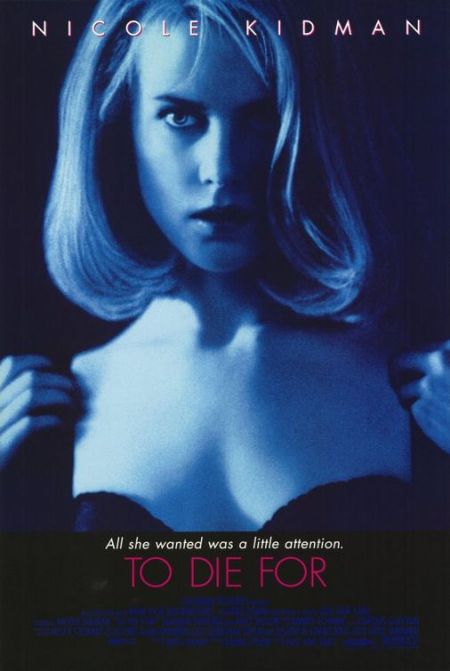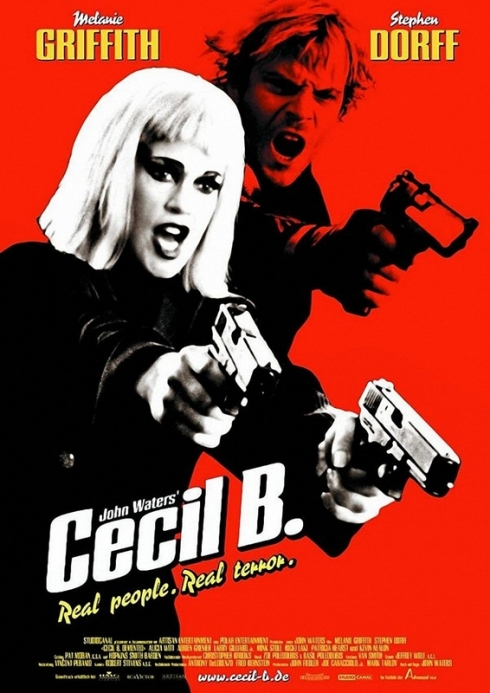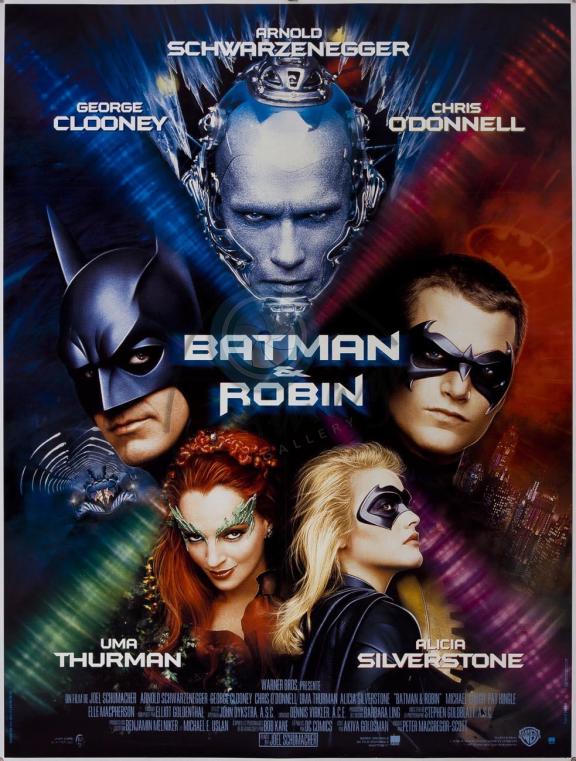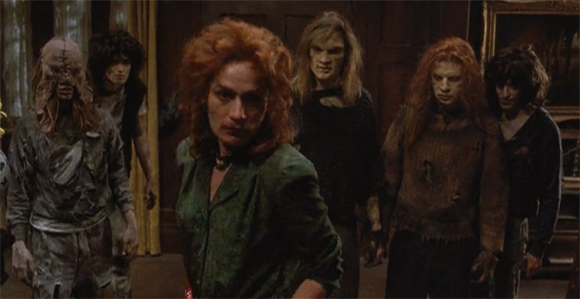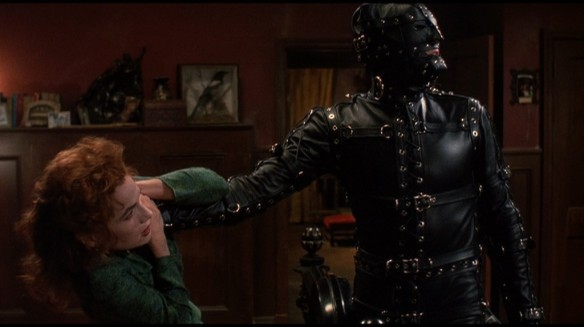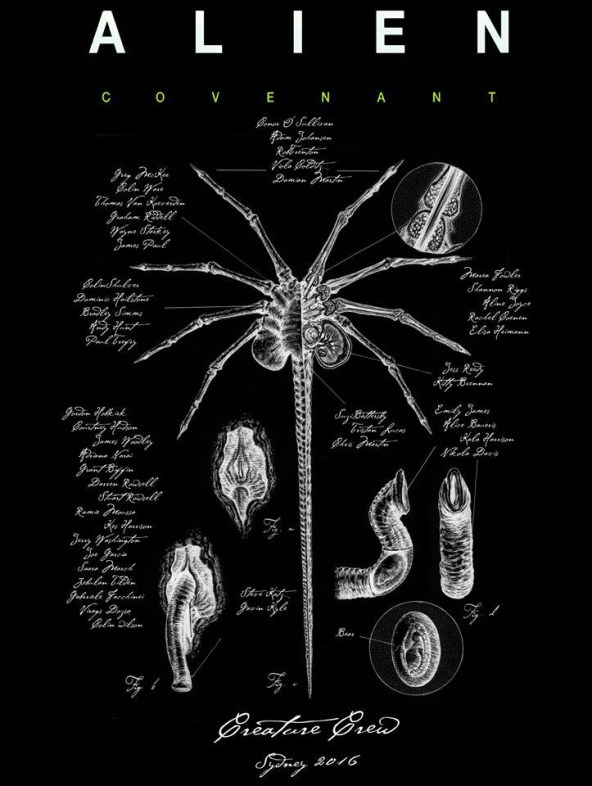
I hate Prometheus and I don’t say that lightly. Part of this resentment towards Ridley Scott’s 2012 sci-fi opus is that it was sold as an Alien prequel. I fed into that promise and gleefully went to a midnight showing (actually 1:30 am because all screenings earlier were sold out) at Arclight even though I had to be up at 6 am for work. Needless to say, I was more than disappointed when I was delivered this black goo, giant space engineers bullshit and one lousy pseudo xenomorph in the finale as a consolation prize after enduring two hours of unanswered questions. I left the theater tired and pissed. Even if the effects were astounding and Charlize Theron was a bad ass, that couldn’t excuse that this was a movie of all setup, no payoff, and horrid Guy Pierce old man make up. Would I see the sequel to this lie? Of course! With the outrage that befell Prometheus on its release meant that the successor would have to ACTUALLY be the Alien prequel we demanded. Dropping the P name, Alien: Covenant aims to regain the fanbase being more action packed and aligned with the structural style of the original series.
The spaceship Covenant is on track to a newly found habitable planet to start a colony with the 2,000 hyper-sleeping passengers on board. After an unforeseen accident that forces the crew awake and burning up the captain in his hibernation pod, the reeling crew takes an abrupt side mission to an unknown planet they receive a cryptic signal from. This opening act in space is a lot of Scott flexing his muscles showing us the breathtaking recreation of space as if he didn’t get enough of that in The Martian. It’s also an opportunity to learn about the team, only half being of interest, that includes freshly appointed leader Oram (Billy Crudup), his second in command and the girlfriend of the burned up corpse Dany (Catherine Waterston), synthetic Walter who is more stilted and robotic than Prometheus’ David (both Michael Fassbender) and Danny McBride in a cowboy hat. We follow the expedition unit onto the lush green landscape that has some hostile beings that we’re quite familiar with. The chaos that catapults the team in motion is by the Prometheus introduced slimy xenomorph-adjacent and leads to more than just brutal attacks and body bursting. Without giving too much away, Covenant bridges the 2012 film or at least the remaining bits of it with the beloved Alien mythos.
What I want to get out there is that I think this is an ok movie, a serviceable Alien prequel and light years better than Prometheus, at the same time this movie can’t exist without it. It makes Prometheus the vegetables you had to eat first before you got to the steak that is Covenant, or more appropriately the quality of a turkey burger. The new film amps up the action and the energy that the previous film lacks because it’s a solemn mood piece. Covenant is delivering quiet horror followed by monumental fight sequences in the style of the original Alien. It’s more of the violence and gore that I wanted but at the same time incorporates the philosophical subject matters spearheading Prometheus. A major overarching theme of the entire series is the idea of playing God especially when it comes to this strange extraterrestrial species. With Alien and Aliens, it was Weyland Industries wanting to harvest the xenomorph for testing and bio-weaponry at the expense of the company casualties then in Alien: Resurrection its cruel genetically modified Sigourney Weaver-xenomorph hybrids. While Covenant’s goal is to deliver the familiarity you have with the series it does get to dig deeper into the God complex that the founder of Weyland Industries passed onto his prized possession, David. Corrupted with power and egomania, David becomes an uneasy figure to survivors which I liked as an alternative threat to the usual double mouthed creature.
Because there’s such a strong focus on this storyline when we actually get to the xenomorph it filled me with elation because it’s the cherry on top of this heavy tenuous enclosed horror of being trapped with an android. While I’m glad they don’t overuse the xenomorph, the turn into the third act doesn’t really know what to do with David. The narrative closure of this film is muddled in its intentions of what is meant to surprise you and I never need to be an hour ahead of a twist. In general, the film is filled with very little surprise because this franchise is so played out. This new millennium diverging series has trapped itself in a corner of being tied with Alien. It seems like Riddley Scott is trying to expand the universe, explore this future of uncharted galaxies and questioning human’s place in the cosmos but if it’s connected to Alien we demand xenomorphs and then it’s the same movie over and over again. You can’t win. Hell, I find AVP is a better side project because it’s a different space to play in, it’s ridiculous and at least the tagline is upfront with the fact that we all lose. With Scott signed on for two additional sequels and considering the cliffhanger the film ends on, theoretically, there is a story there but it sounds pretty similar to Aliens and I’d prefer to have no one touching a remake of that.

